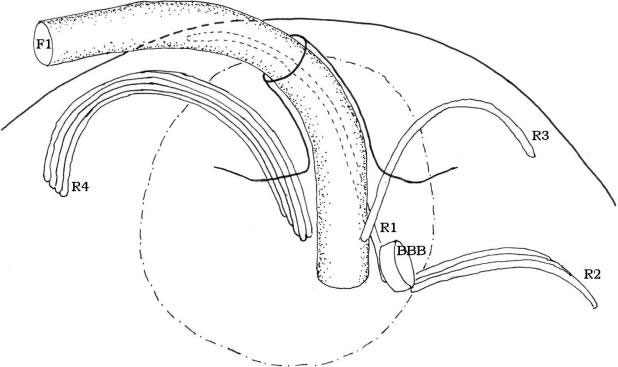Chlorarachniophyta
The single flagellum of the ovoid zoospores of Chlorarachmon reptans possesses a root system that
consists of a microtubular component appearing as a 3þ1 structure near the level of emergence of
the flagellum, soon increasing to 8 þ 1, and a second root with a homogeneous substructure that
occupies a distinct concavity in the nuclear envelope.
In contrast to C. reptans, cells of Bigelowiella natans are basically biflagellate. The second
flagellum, however, is exceptionally short and represented only by a barren basal body inserted
at approximately right angle to the emergent flagellum. In this alga the four flagellar roots are
represented by microtubular structures only with no cross-banded roots.

FIGURE 2.56 Root system of Bigelowiella natans (Chlorarachniophyta). F1, main flagellum; BBB, barren basal body; R1, R2, R3, and R4, microtubular roots.
A microtubular root is present on either sides of long flagellum basal body; the largest and most conspicuous root,
which attaches to the outside of the long flagellum basal body, is five-stranded and forms an “L” in the area between the nucleous and the plasma membrane. Just before terminating, this root
became two-stranded. The second microtubular root associated with the long flagellum basal
body emerges from the corner between the two basal bodies and is one-stranded. The third flagellar
root emerges on the outside of the short basal body and it is three-stranded. The fourth microtubular root is the most unusual; it is one-stranded and it seems to emerge within the lumen of the short
basal body next to the cartwheel structure (Figure 2.56).

FIGURE 2.56 Root system of Bigelowiella natans (Chlorarachniophyta). F1, main flagellum; BBB, barren basal body; R1, R2, R3, and R4, microtubular roots.





